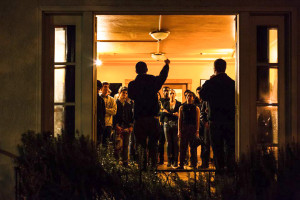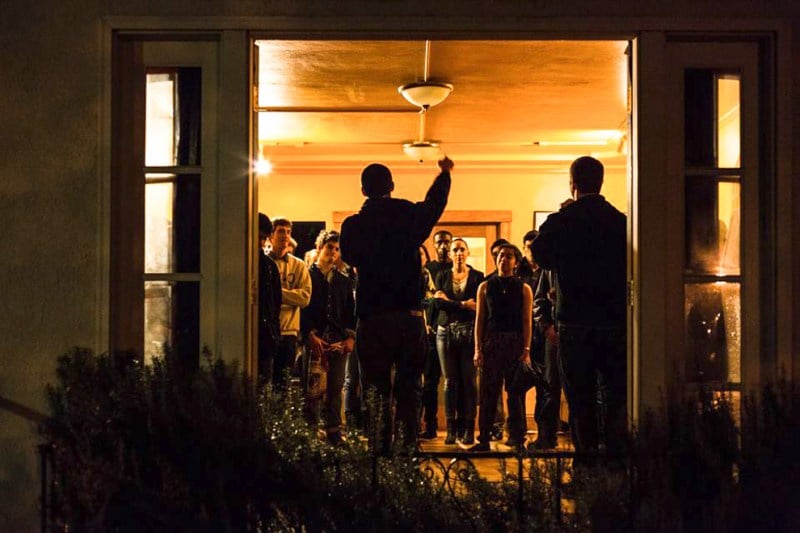COLLO, a new student arts organizing body housed under the Institute for Diversity in the Arts (IDA), received voluntary student organization (VSO) standing from Student Activities and Leadership (SAL) this spring. The group aims to facilitate interdisciplinary collaboration within the arts at Stanford.
Though newly approved, COLLO – which stands for “COLLOQuium on issues of diversity x COLLABoration in the arts” – has been quite a few years in the making.
The group’s push to become a VSO last spring did not receive approval, since SAL wanted the group to distinguish itself from other arts organizations on campus, particularly the Student Organizing Committee for the Arts (SOCA). This year, COLLO formalized its new vision, which is focused on elevating student talent, improving networking and fostering collaboration.
“What we identified is that SOCA is very powerful at putting on large-scale events that benefit the arts community, such as Party on the Edge and Art After Dark,” said Annie Phan ’16, a co-director for COLLO. “How we differentiated ourselves is that instead of being more focused on events programming, in the long run we want to be network-based.”
“We really focus on collaboration,” said co-director Luke deWilde ’16. “Something that distinguishes us from SOCA is that we really want to create a student network that fosters collaboration and really supports student artists across all mediums, not just give them a stage.”
Tyler Brooks ’15, the organization’s founder and co-director, said COLLO began as an “immensely nebulous idea” during the 2010-11 school year in response to student demands for more on-campus support and pre-professional training for the arts.
The next year, COLLO functioned as the “Jam Committee” within IDA. Brooks and his fellow committee members focused on putting together events known as “town halls” and “jam sessions,” which COLLO continues to organize to this day.
Brooks described the town halls as “sort of house meetings for the arts on campus,” where students can come together to vent their frustrations, plug their events and brainstorm ideas for what the arts could be like on campus. During jam sessions, which average from five to 10 participants, students from different disciplines of art working in various mediums come together to improvise and engage creating interdisciplinary work.
During the 2012-13 school year, the Jam Committee evolved into the “COLLO committee” under IDA and built a more structured organization. COLLO added two more programs: COLLO spotlights and workshops. COLLO spotlights feature new student work and offer an opportunity for student artists to perform and discuss their latest creations.

This past winter, for example, a listening party was held for twin rapper/producer duo Aidan and Charlie Geronimus ’16 at IDA’s Harmony House. The twins performed their latest mixtape and discussed the humanitarian efforts behind the project, the proceeds of which will all be donated to feeding the homeless in the Bay Area.
COLLO also hosts workshops, which function as “skill shares” led by Stanford students and occasionally alumni. Past workshops have tackled skills such as beat-making and music review.
To build a network of Stanford artists, COLLO is currently spearheading a student artists’ portal integrated with Stanford’s domain, which it hopes to have ready by the end of next year.
“It’s kind of like a combination of Facebook, LinkedIn, Craigslist and Stanford Who,” said Brooks of the new portal, which is being called ASSAP (the Associated Stanford Student Artists’ Portal). “You can create a profile of any of the work you do on campus, where you work, what software and equipment you use and samples of your best work.”
deWilde, a rapper and producer himself, envisioned how a feature like ASSAP could facilitate collaboration amongst Stanford artists.
“For example, if [dance group] DV8 wanted to work with [a capella group] Raagapella to create a performance piece,” he said. “What would they do and where would they start? We want to be an organization that can work with getting these two groups into the same room and do design thinking for such interdisciplinary performances.”
With the group’s newly-minted standing as a VSO and access to ASSU fees for the upcoming year, COLLO’s directors are excited to expand recruitment and foster more opportunities to allow Stanford’s creative culture to thrive.
This June, COLLO plans to put on a one-and-a-half hour-long pilot program that will feature TEDx-style presentations, student performances and a facilitated jam session.
“There’s a lot that can be discovered about the Stanford arts community,” deWilde said. “Every artist is already extremely talented on campus. But it’s very easy to feel alone on campus as an artist, and to know that you have a big group of people behind you supporting you would be a pretty special feeling. And that’s what we’re trying to create.”
Contact Minna Xiao at mxiao26 ‘at’ stanford ‘dot’ edu.
